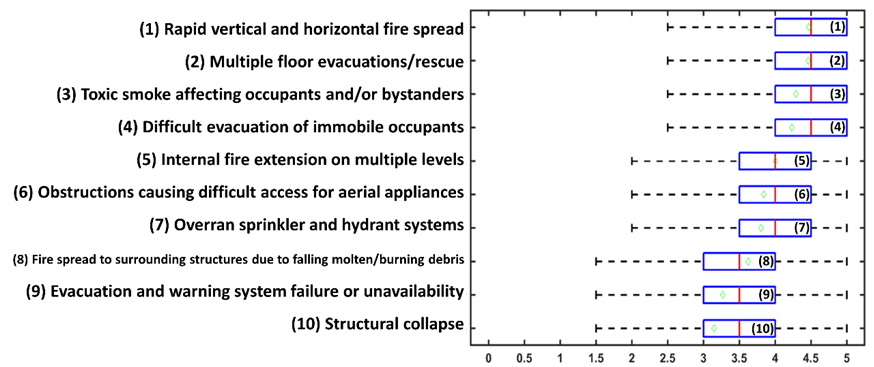Fire risk assessment as a legal requirement plays a vital role in the design of buildings. The primary motivation is to avoid the many and varied multiple fatality fire disasters that have occurred in the past. We aims to develop an enhanced fire risk classification integrated with numerical and experimental data.
Recent high-profile building fires involving highly-combustible external cladding panels in Australia as well as Dubai, China, and the United Kingdom have created a heightened awareness by the public, government, and commercial entities to act on the risks associated with non-compliant building structures. A database of fire events involving combustible aluminium composite panels was developed based on (i) review of relevant major fire events in Australia and other countries, and (ii) numerical simulation of the ignitability, fire spread, and toxic emissions associated with composite panels. Through the application of large-eddy-simulation (LES)-based computational fire field models, the associated risks for a standardized two-storey building with external cladding was considered in our study. A total of sixteen simulation cases with different initial sizes of the fire and different air cavity widths in the exterior cladding assembly were examined to investigate the tolerable situations and their influences. It was discovered that for most cases, with an initial fire size greater than 400 kW/m−2, the fire will spread from the first to second floor before the allowed egress time period.

Figure.1 Risk rating for critical factors associated with combustible cladding materials.
Publications
Chen, T. B. Y., Yuen, A. C. Y., Yeoh, G. H., Yang, W., & Chan, Q. N. (2019). Fire risk assessment of combustible exterior cladding using a collective numerical database. Fire, 2(1), 11.



